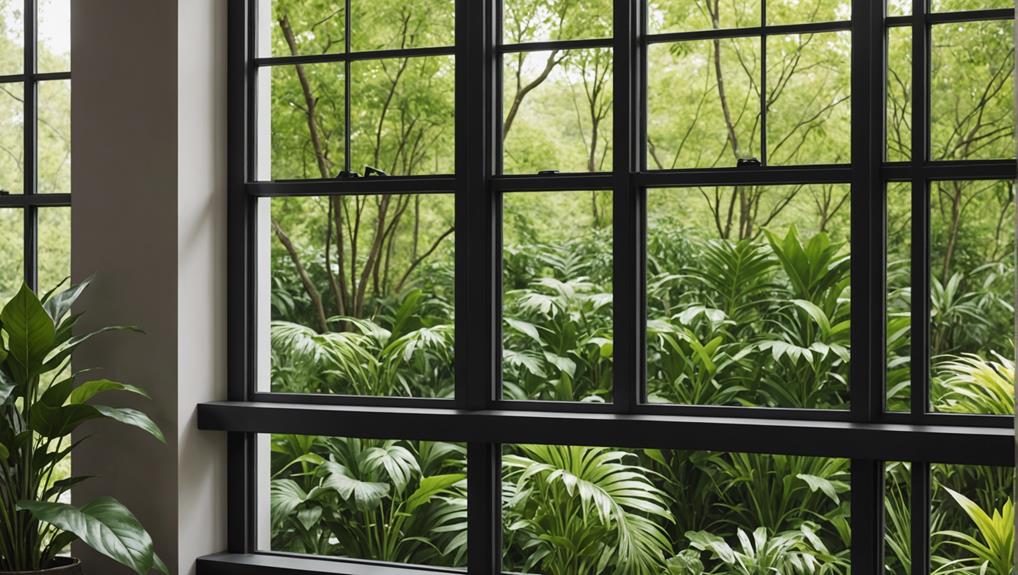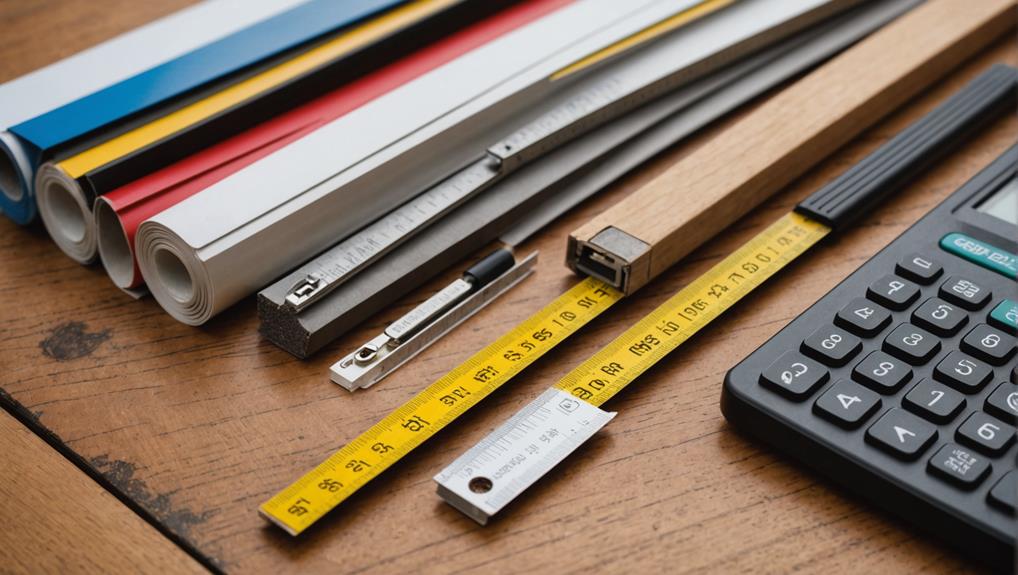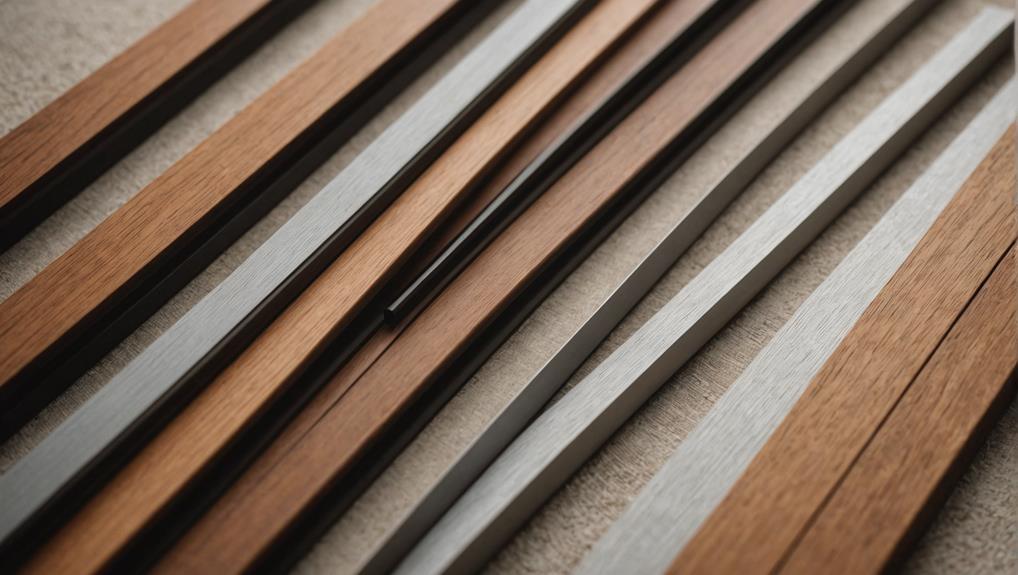Table of Contents
If you’re searching for budget-friendly materials for window replacement, vinyl windows are a fantastic option due to their affordability and low maintenance. They provide excellent insulation, which can help lower your energy bills by up to 15%. For those living in wet climates, fiberglass windows are worth considering for their durability and energy efficiency.
Aluminum windows are another lightweight and cost-effective choice, although they tend to be less energy-efficient. If you prefer a classic look, wood-clad windows offer better insulation along with a timeless appeal. By carefully weighing the pros and cons of each material, you can identify the best solution for your unique needs. There’s so much more to learn about how to enhance your investment!
Key Takeaways
- Vinyl windows are affordable, low maintenance, and provide excellent insulation, leading to energy savings and a lifespan of over 20 years.
- Fiberglass windows offer superior durability and energy efficiency, making them ideal for extreme climates, though they come at a higher cost.
- Aluminum windows are lightweight and budget-friendly, but their poor energy efficiency can increase heating and cooling costs.
- Wood windows provide classic aesthetics and energy efficiency but require regular maintenance to prevent rot and damage.
Overview of Window Replacement Materials

When considering window replacement, it’s essential to explore various materials, each offering unique benefits and price points tailored to your needs.
Vinyl windows are a popular choice due to their energy efficiency features and affordability, ranging from $250 to $950. They require minimal maintenance and can last over 20 years.
If you live in extreme climates, fiberglass windows might be more suitable. They provide superior durability and insulation, typically costing between $500 and $1,500.
For those seeking a blend of aesthetics and longevity, composite windows combine the look of wood with the durability of fiberglass, averaging $700 to $1,200.
Aluminum windows are budget-friendly options, costing $300 to $800, but may lack energy efficiency, leading to higher heating costs.
Finally, wood windows offer significant customization options and a classic appeal, generally priced between $750 and $1,250. However, they do require regular maintenance to prevent damage and maintain their energy efficiency.
Benefits of Vinyl Windows
Vinyl windows offer exceptional energy efficiency and durability, making them a smart choice for homeowners looking to save on energy bills and reduce maintenance efforts. These windows boast excellent insulation properties, which can lead to savings of up to 15% on your energy bills. With a lifespan of over 20 years when properly maintained, vinyl windows represent a long-term investment that pays off.
One of the biggest advantages of vinyl windows is their minimal maintenance requirements. You won’t have to worry about painting or dealing with issues like rot and warping, as they’re resistant to these common problems. This durability not only enhances their appeal but also reduces ongoing costs for upkeep.
In terms of affordability, vinyl windows typically range from $250 to $950, with installation adding an extra $300 to $400. This makes them an affordable option for many homeowners.
Plus, they come in a variety of colors and styles, allowing you to create a customized aesthetic that complements your home’s look while still prioritizing energy efficiency. Choosing vinyl windows is a decision that benefits both your budget and your home’s appearance.
Pros and Cons of Aluminum Windows

Aluminum windows offer a budget-friendly option with a cost range of $300 to $800, making them appealing for homeowners seeking affordability.
One of the significant advantages of aluminum is its design flexibility; you can easily find windows that fit various architectural styles. They’re also lightweight and durable, requiring low maintenance, which is a plus for busy homeowners.
However, keep in mind that aluminum windows have poor insulation due to their high thermal conductivity. This can lead to increased energy bills by 8-10% annually because of heat loss, especially in winter. While they’re cost-effective upfront, the lower energy efficiency may affect overall comfort in your home.
Moreover, while aluminum is strong, it’s susceptible to corrosion in humid or rainy climates, which can shorten its lifespan. This means that while you may save initially, future repairs or replacements could offset those savings.
To summarize, aluminum windows present a mix of benefits and drawbacks. Weighing their durability and design flexibility against energy efficiency and potential corrosion will help you make an informed decision for your home.
Understanding Wood Window Options
Wood windows provide a timeless charm and offer a variety of customizable options that can enhance the overall aesthetic of your home. With choices in color, grain, and style, you can create a look that perfectly complements your design. The average cost for wood windows ranges from $750 to $1,250, making them a higher investment compared to alternatives like vinyl or aluminum.
While wood windows boast excellent insulation and energy efficiency when maintained, neglect can lead to issues such as rot and insect damage, which affect their long-term performance. Regular maintenance is necessary to preserve these benefits and avoid increased heating and cooling costs.
If you love the look of wood but want to minimize upkeep, consider wood-clad windows. They combine the aesthetic appeal of wood interiors with durable exteriors, offering a practical solution, though they typically come at a higher price point.
Ultimately, investing in wood windows can be a beautiful and effective choice, providing both charm and functionality if you’re willing to commit to their care.
Exploring Fiberglass and Composite Frames

Fiberglass and composite frames offer homeowners a durable and energy-efficient alternative to traditional window materials. When considering window replacement, these options stand out due to their impressive performance and long lifespan.
Here’s what you should know about fiberglass and composite window frames:
- Durability: Fiberglass window frames resist wear and tear, making them ideal for extreme climates.
- Energy Efficient: They provide excellent thermal insulation, reducing heat loss and saving on energy bills.
- Low Maintenance: Both options require minimal upkeep compared to wood or vinyl frames.
- Cost: Fiberglass frames typically range from $500 to $1,500, while composite frames range from $700 to $1,200.
Choosing fiberglass or composite frames not only enhances your home’s aesthetic but also contributes to long-term savings and efficiency.
Whether you prioritize durability or energy efficiency, these materials are worth considering for your next window replacement project.
With their combined benefits, fiberglass and composite frames can be a smart investment for any homeowner.
Energy Efficiency in Window Choices
When choosing window materials, energy efficiency plays an essential role in maximizing comfort and reducing costs in your home. Selecting the right replacement windows can greatly impact your energy savings. For instance, vinyl window frames offer excellent insulation and are often a cost-effective choice.
Upgrading to double-pane windows can make a noticeable difference, as they minimize heat transfer compared to single-pane options. Additionally, incorporating Low-E glass coatings can enhance performance, making your windows 10%-15% more efficient. When these windows are filled with argon gas instead of air, they provide even better insulation, leading to potential savings of 15% on energy bills.
Look for windows with the ENERGY STAR label, as they’re designed to be 15%-40% more efficient than standard building codes, ensuring you’re making a smart investment tailored for your climate.
Cost-Saving Strategies for Replacement

Finding cost-saving strategies for window replacement can greatly reduce your overall expenses while enhancing your home’s value and energy efficiency. By implementing these strategies, you can make your project more budget-friendly:
- Bulk Purchasing: Buy windows in larger quantities to take advantage of manufacturer discounts.
- Offseason Shopping: Look for deals during the offseason when prices are typically lower.
- Government Incentives: Explore state or local government programs that offer rebates for energy-efficient windows.
- Local Utility Rebates: Check with your utility company for any available rebates for energy-efficient upgrades.
Opting for professional installation can also save you from costly mistakes, ensuring your new windows perform efficiently.
By carefully selecting material options and staying informed about available incentives, you can maximize your home improvement budget while boosting your home’s energy efficiency. Check out our 7 Best Vinyl Vs. Wood Window Replacement Options.
With a little research and planning, you’ll find that window replacement doesn’t have to break the bank!


Leave a Reply